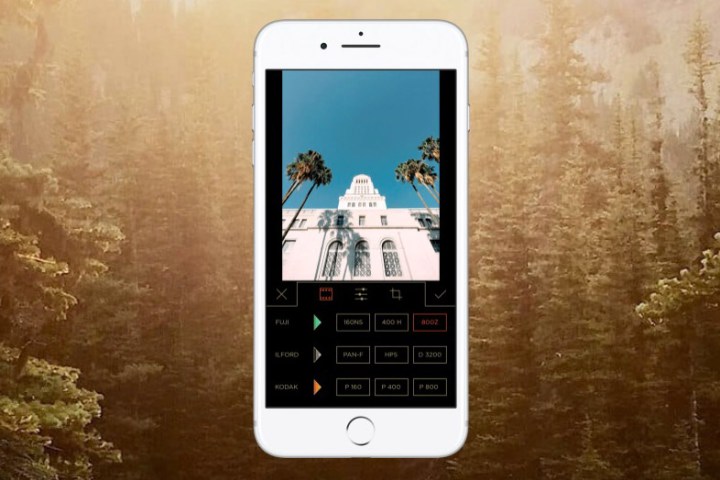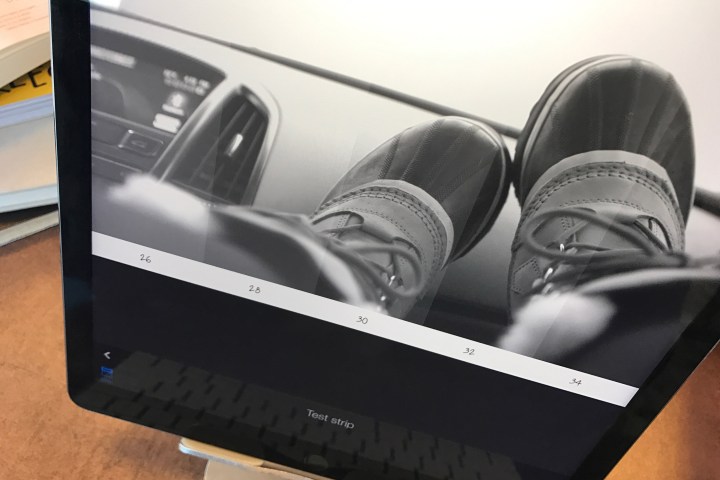Photography has come a long way since the days of film. But, much like physical music media, analog photography has had quite the revival, largely thanks to the growth of film-inspired photography apps available for your iPhone and iPad.
Here, we take a look at a few of our favorite film emulation apps for iOS, and share our thoughts on what sets them apart from the competition.
Filmborn – Free (+in-app purchases)

As its name suggests, Filmborn was born to replicate the aesthetic of film photography on mobile devices. It’s one of the newest apps on this list, but it’s already gained a massive following, and rightly so.
Filmborn features nine different presets designed to replicate various film stocks from Kodak, Ilford, and Fujifilm. Whether you use the in-app camera or are editing images from your camera roll, Filmborn makes the workflow simple with three steps: Select the filter you want to use, make any additional exposure adjustments, and crop the image to your liking.
The best part about this app, over apps such as VSCO, is there’s no internal library to deal with. Edits you make get saved directly to images in your Camera Roll. This prevents the hassle of constantly exporting images and trying to figure out where edits are located.
Additional in-app purchases include the ability to create pre-defined camera setups so there’s no need to add filters afterwards, upgraded editing tools such as curves adjustment, as well as a unique rangefinder mode that ensures you never miss a moment.
VSCO – Free (+in-app purchases)

VSCO has become the gold standard for film emulation on-the-go. Its interface is a challenge to understand if you’ve never used it before, but despite this, it’s an interface that many apps emulate.
When you download the app, you’re given a small set of presets to use. Unlike Filmborn, VSCO’s presets aren’t meant to be exact replicates of specific film stocks. Instead, they’re more vague representations of various film stocks, and the additional presets available through in-app purchases are grouped together around a specific theme or concept.
There are more than three dozen presets to choose from and each can be fine-tuned to look exactly how you want. The best part is, once you find a specific edit that you like, you can copy and paste it onto future images with a few taps of the screen, rather than having to replicate it all, piece by piece.
VSCO also features an integrated library, where you can store photos captured in the app, or import photos from your Camera Roll. While this is nice if you like to keep your photography work away from your other snapshots, it can prove to be cumbersome if you’re taking a lot of photos and exporting them. You tend to end up with a lot of doubles and have to manage two photo libraries compared to one.
RNI Films – Free (+in-app purchases)

RNI film is lesser known than VSCO, but absolutely deserves to be mentioned alongside it. The app itself is a blend of Filmborn and VSCO, in the sense that its interface bears a striking resemblance to VSCO’s, but it goes about emulating films in the same way Filmborn does (by making the presets based off very specific film stocks and processes).
RNI Films splits their presets into categories, including negative, slide, instant, black & white, and vintage. These can be acquired via in-app purchases.
The quality of the emulations is right alongside VSCO, but in our experience, the app does have the slight upper-hand in terms of the overall interface and, more specifically, the grain feature in RNI produces better results.
Pico – Free (+in-app purchases)

Pico is the most simple of the apps on this list. We called Pico “VSCO Lite” for the fact that it offers a select few film emulation presets in a very minimal, unobtrusive interface.
When shooting or editing a photo, you’re given eight individual presets to work with: Max, Ultra, Plus, Pro, Noir, One, Gold, and Xtra. Each of these presets vaguely represents a style of film stock from the days of analogue photography.
Like Filmborn, photos captured with Pico are saved directly to your Camera Roll, and all photos edited from your Camera Roll will be edited without the need to duplicate or add them to a dedicated library.
One of the best features of Pico is its simple exposure control. When taking a photo, all you do is slide your finger across the display to adjust the exposure. You don’t have to worry about messing with shutter speeds or anything else.
Darkr – Free (+in-ap purchases)

Darkr is unlike any of the other apps on this list. Rather than replicating the look of film used in analog photography, Darkr replicates what comes after — the printing process in the darkroom.
Just as you would in a darkroom, Darkr lets you expose a test strip to see what type of base exposure you’re working with. From there, you’re given the option to dodge and burn the image using your finger as the guide. Once finished, you can adjust various layers and get the image to look exactly as you’d like.
As a bonus, Darkr provides a series of included tutorials that help guide you through the process of editing apps in its digital darkroom.
It’s a clever concept that’s equal parts novel and effective. If you’re looking for a unique experience in a photo-editing app, Darkr is definitely worth taking for a spin.



